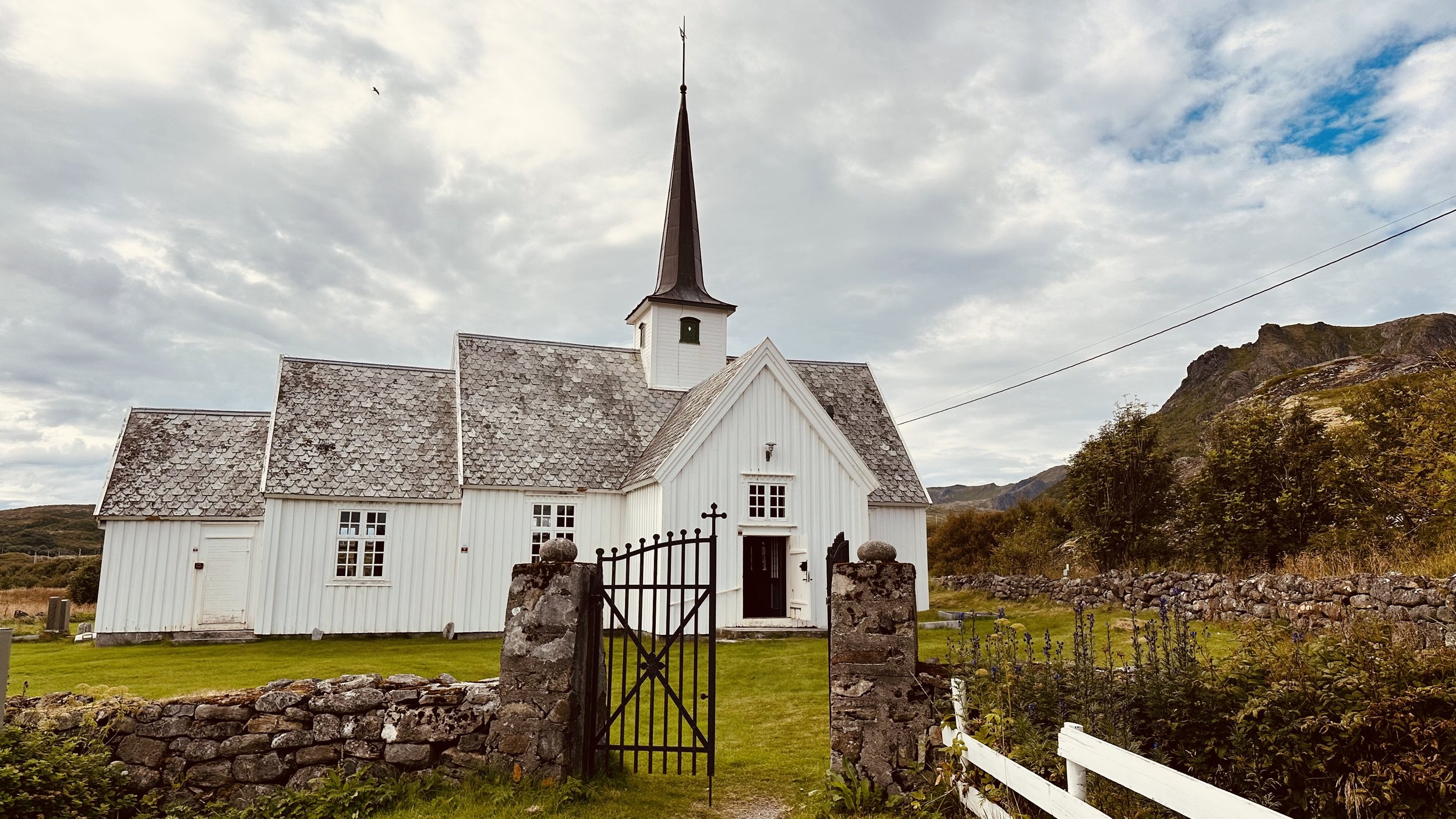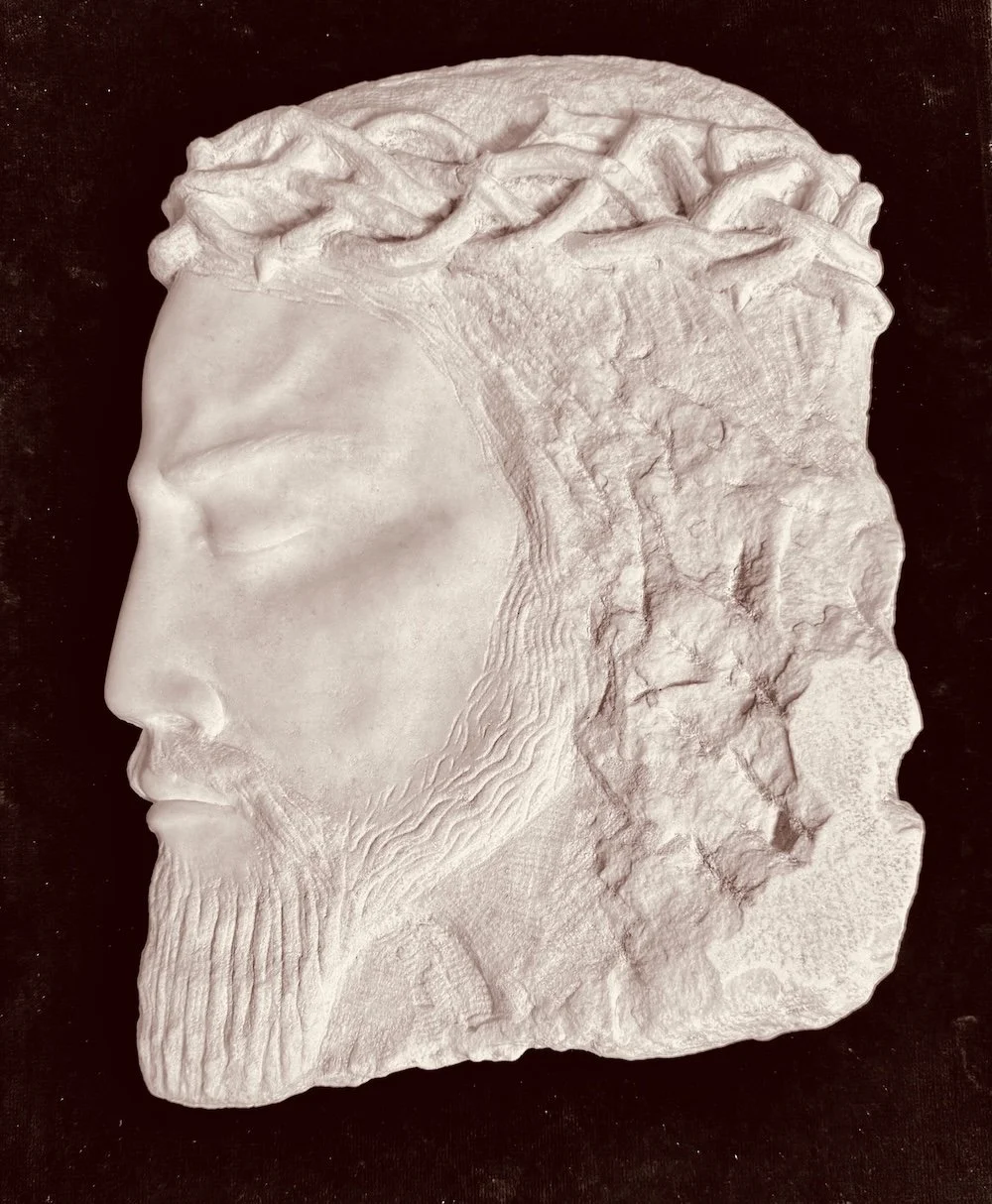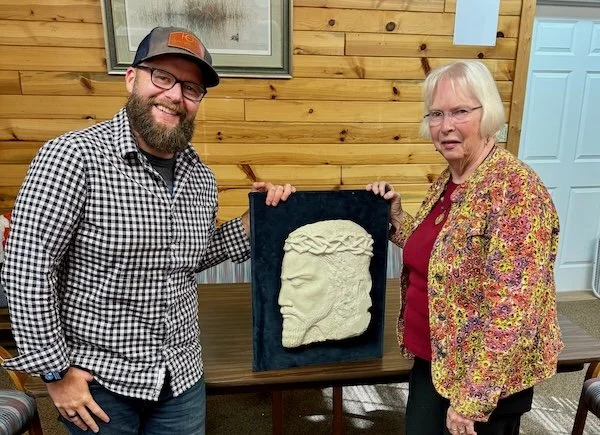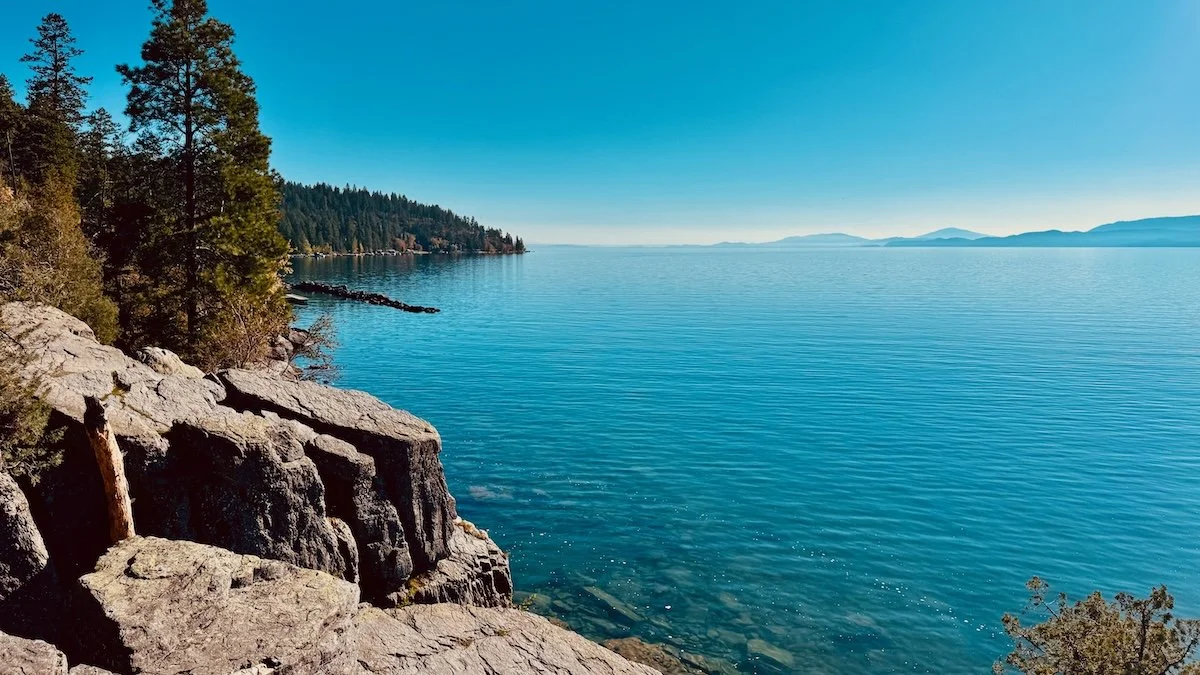Oskar J. W. Hansen's Long-Lost “Head of Christ” Bust Found in Montana
This story is the second in a two-part story about Oskar Hansen's Head of Christ sculpture. The first part of the story is here.
Almost a year ago I wrote about the story of my complex, years-long hunt for Oskar J. W. Hansen's missing first sculpture, which I suspected had been in Bigfork, Montana for the last 90 years.
After I published my story, the local Bigfork Eagle newspaper ran an extensive article about my quest, and I was hopeful that a local Montana resident might see the story and offer some clues as I continued my search.
Four days after that newspaper article, I got an email...
Oskar's Head of Christ was found!
Oskar J. W. Hansen's First Sculpture
Oskar Hansen only mentioned this sculpture, in passing, a few times in his career. He briefly described it in his 1964 book, Beyond the Cherubim, at the end of his story about his Viking Island. He also mentioned it in two newspaper interviews, one in the 1930s and one in the 1950s.
As Oskar tells the story, soon after his church confirmation in 1906, around his 14th birthday, his foster parents sent him away to become a mess-boy on a commercial cargo ship. This was a common rite of passage for young men from northern Norway at the time. In Oskar's case it also came as something of a relief. His strong personality, deep connection to nature, and grand, visionary ideas had always made him a bit of a misfit with the other boys at school—he even showed up to his confirmation with a fresh black eye.
Langenes Church in arctic Norway, where Oskar Hansen was confirmed in 1906. (Photo by Aaron Street)
Over the next four years, Oskar tells of a series of epic sailing adventures all over the world. I'll have more on those stories another time, but one of Oskar's first ports at age 14 was a stop in Greece.
While his fellow sailors made their way directly to bars and brothels, Oskar and the ship's "very old" carpenter instead spent their leave visiting museums and archeological sites, studying ancient Greek sculpture.
"Most sailors do not do things like that," Oskar noted, "but I always had a deep interest in history and archeology. This interest flamed up in me when I was a boy, the time that a friend and I found a Viking grave, an actual Viking grave."
While exploring Greece, Oskar and the ship's carpenter obtained some pieces of Greek marble. Back on board the ship, the two of them modified some of the carpenter's tools to serve as makeshift sculpting tools and began to practice their new craft.
"This time had great meaning for me. I got a variety of strong impressions... I was taken by the ancient sculpture work and began to carve in wood and clay."
This was the beginning of Oskar's lifelong calling as one of the world's great sculptors.
The Torment of Oskar's Head of Christ
While sailing the globe, during his free time, Oskar would sculpt.
After practicing with wood and clay, Oskar decided he was ready to carve his piece of Greek marble.
Greek marble quarry. (Photo courtesy of jdphotos2007)
Recalling the story 30 years later, Oskar explained, "Believe it or not," he said the sculpture he carved in that block of marble was "some of the finest work I have done until now."
That sculpture, Oskar's first, carved around the age of 14, was his Head of Christ.
"Out of a piece of marble I sculpted at night a bas-relief of The Christ," he recalls, "What I ... created converged into reality all the pent-up emotions of those years of puberty."
Oskar's childhood tormenting from other boys had caught up with him, in 1964 he recalled, "The Christ now wore the cruel Crown of Thorns shaped from the derisions of my school mates... Now at seventy-two, the other-worldliness is still with me: only I have come to expect and survive the perplexities of the majority of mankind, who secretly envy and despise that beauty and reality which they cannot, themselves, create."
He continued, "I see it now as better that life happened in my childhood in the way it did; but at that time, the isolation of it became unbearable. The penalty for being different exacted too heavy a burden. In my case there were no filial bonds, nor parental obligations."
"In this head I see the strong simple lines and the fundamental power, which I believe are the most valuable characteristics of my later works."
After a year or two of sailing, Oskar seems to have returned home one last time around 1908 or 1909.
He brought his Head of Christ with him.
He even showed it to some of the tormenters who had inspired it. "Imagine, then, my stupefaction when both my teacher and my Priest fell to their knees and worshipped the Spirit of Him.”
He didn't stay long, though. "With monies pressed into my hand and a blessing upon my head, both given by a deeply moved Priest, I sought, on his advice, the shipping lanes of life. I ran away and shipped to sea."
A Sculpture's Journey
I've found no mention of where Oskar's Head of Christ sculpture was when he jumped ship and swam to America in 1910, nor of where it was when he served in the U.S. Army on the Mexico border (possibly even crossing the border to fight alongside Pancho Villa in the Mexican Revolution). There are no mentions of it between the time he says he showed it to his priest in Norway around 1909 until much later when he mentions in 1932 that it was last in Rev. Eugene Milne Cosgrove's Unitarian Church in Hinsdale, Illinois.
Through extensive research, I deduced that Cosgrove likely brought Oskar's statue with him when he retired to rural Montana to launch an esoteric spiritual retreat center, Journey's End, on the shore of Flathead Lake near Glacier National Park.
Rev. Eugene Milne Cosgrove circa 1930. (Courtesy of Harvard Divinity School)
When Cosgrove died in 1953, some friends and patrons kept his place going for a few years, but without his leadership the project ended. The trustees of the retreat center then donated the property and furnishings to the local Bigfork Masonic Lodge, which used it as their own camp and retreat center for a few years, before selling the land to the State of Montana in 1969 to turn it into what is now Wayfarers State Park.
Cosgrove's few remaining possessions, including Oskar's sculpture, were still in the possession of the Masonic Lodge in the mid-1990s, but I reached out to dozens of people connected to the Lodge and the community and no one I contacted had any recollection of the Head of Christ statue or its current whereabouts.
Finally, New Leads
Last December, I wrote the story of my quest to find Oskar's lost sculpture and the dead ends I'd run into along my path.
Then in January of 2024, the Bigfork Eagle ran a long feature story on my art mystery and just a few days later, Bigfork resident Chris Hagar emailed me with a photo of a marble, bas relief, head of Christ with a crown of thorns. My theories were confirmed, the sculpture was still in Bigfork.
Oskar J. W. Hansen's Head of Christ c. 1906
Apparently, for many years, the sculpture had been hanging, largely unnoticed in the back of the sanctuary of the local Methodist Church.
A Visit to Bigfork
It took me a few months of travel logistics and coordination with Chris to make a plan to fly out to Bigfork to see it for myself.
Over my years of research into this story, I'd also connected with Nenette Loftsgaarden, who as a young girl in the 1940s lived at Journey's End, where her parents served as the property caretakers. Nenette is likely one of the only living people who personally knew and remembers Rev. Cosgrove. When she heard about my visit to see the sculpture she asked if she could join.
This past week, Chris and a fellow member of the church congregation arranged for Nenette and I to see Oskar Hansen's Head of Christ.
What we found clearly matched Oskar's evocative description and the energy he'd channeled into the rough-hewn thorns and the smooth features of the face.
It was an incredible moment and such a delight to be able to share it with Nenette.
Nenette Loftsgaarden and Aaron Street with the Head of Christ. (Photo courtesy of Chris Hagar)
Oskar's important first sculpture is in good hands in Bigfork and its owners intend to document and share its story for future visitors. I'm very grateful for that. 90 years after Oskar last saw it in Illinois and its story was almost lost, his Head of Christ and its story are now hopefully preserved for at least another 90 years.
A Journey's End
After our visit with the sculpture, Nenette and I made the short drive to Wayfarers' State Park so she could walk me around where her family's caretaker's cabin had been and where Cosgrove had led his Journey's End retreat center for 20 years. It was very special to share the visit with her and hear her memories of its long-gone orchards and buildings and her fond memories of Rev. Cosgrove and the freedom she felt in this magical place in nature.
Wayfarers' State Park on Flathead Lake, the former site of Eugene Cosgrove's Journey's End. (Photo by Aaron Street)
The following day I went on a four-hour mountain hike to the Jewel Basin, a series of colorful mountain lakes that Cosgrove loved throughout his life.
The long, and winding mountain path to the Jewel Basin. (Photo by Aaron Street)
In 1919 he gave a famous sermon as a spiritual ode to the Jewel Basin. It was reprinted in full in newspapers across Montana, was republished by the church in book form, and quotes from it are still frequently found in travel brochures:
Hidden away by the gods, like a necklace of pearls, among the crags and fastnesses of the Kootenay mountains, lies the Jewel Basin, the enchanted land of this, our Montana.
Friends, I have seen the sun set on the minarets of the Alhambra in Spain, and make splendid the dome of St. Sophia in Constantinople. I have watched the play of color upon the hot sands of the desert of Egypt, with sphinx and pyramid—these ghostly shadows of eternity—rising like exaltations out of the deepening twilight. I have made the trail through the hinterland of the Canadian Rockies to where the Aurora Borealis from the Polar seas make the northern night glorious half the cycle of the year. But for kaleidoscopic lights and shadows; for octaves of tone and color; for stupendous vistas, and the unending variety of the moods and forms of nature, Jewel Basin is, to the vision of my experience, the most charmed and charming spot in all the world.
–Excerpt from Rev. Eugene Milne Cosgrove's Sermon "Jewel Basin, the Enchanted Land of Montana," September 1919.
The turquoise water of Twin Lakes in the Jewel Basin. (Photo by Aaron Street)







